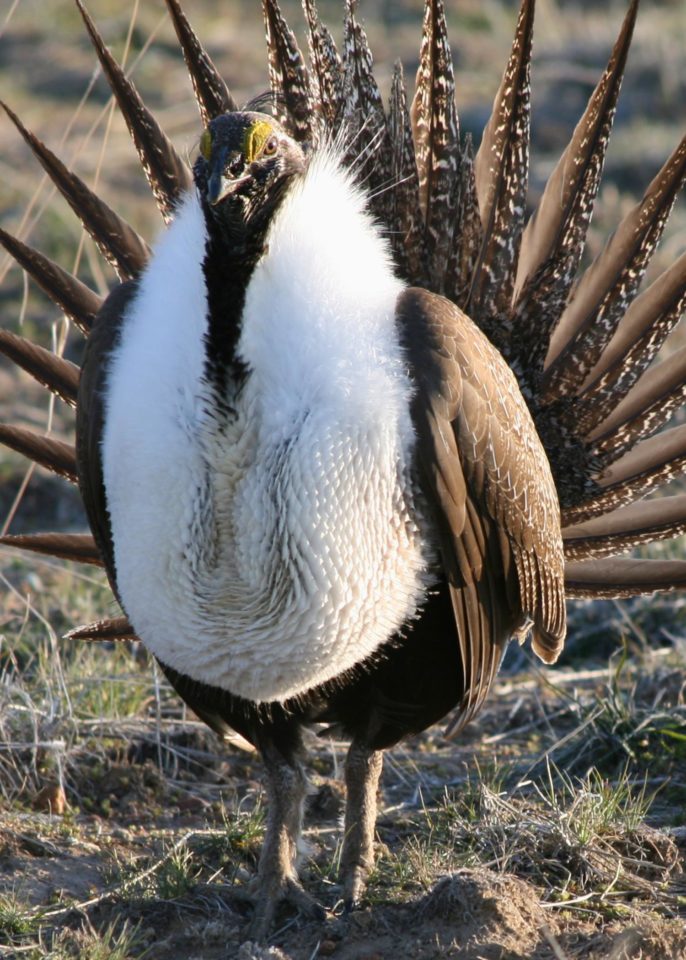Heath Bagley
Sagebrush is everywhere here in the Sawtooths! If you’re like me, you can’t help but stop and sniff it every once in a while. It might look like a plain shrub you see constantly in the west, but it’s an important keystone species here in the Sawtooths and across the Western U.S. You might have spotted sage grouse around the Sawtooths particularly in the Stanley Basin area where there’s large open fields of sagebrush. In a United States Department of Agriculture article, Conservation and Restoration of Sagebrush Ecosystems and Sage-Grouse: An Assessment of USDA Forest Service Science, researchers detail how the degradation of sagebrush ecosystem over the past few decades has negatively affected greater sage grouse populations and countless other species.

You might already know that in the wilderness, you are required to feed your stock animals weed free feed for a time before and during your stay in the Sawtooths. This is because invasive plants can be spread by stock in their waste and can quickly smother and out-compete natives. We are lucky to still have a diverse landscape here in the Sawtooths, with plenty of natives peppered between sagebrush, but in many other areas cheatgrass has taken over that space. The assessment states that “active restoration of arid and semiarid sagebrush ecosystems that lack the necessary perennial plants for unassisted recovery is particularly challenging because of low, and highly variable, precipitation, episodic plant establishment, and widespread invasion by exotic weeds.” (Deborah, 2016) In plain terms, this describes why it is so difficult to restore sagebrush habitat after it’s already been degraded. Once land becomes bare, the soil can’t uptake moisture in the same way as before, making it difficult to reestablish native plants. Invasives can also be relentless, and often must be removed by hand. One issue addressed in this assessment that has greatly affected sagebrush and its companion plants like rubber rabbitbrush and bitterbrush is that cheatgrass and other invasives pop up much faster than any native plant after a fire. In some regions, cheatgrass has nearly completely replaced natives, leaving swaths of sagebrush and cheatgrass in the wake of a fire.

So, how does this affect greater
What can you do to help? Checking your shoes for rogue
seeds, adhering to feed regulations, and making safe and monitored fires in
legal areas are good ways to help. If you find an invasive plant out on a trail
or on your property, calling the Idaho invasive species hotline at
1-877-336-8676 is the first step. Volunteering to do land restoration work is
another wonderful option! The SageStep Treatment Evaluation Project uses
community led data research to restore sagebrush steppe. The Boise Goathead
Fest is a yearly project that pulls thousands of pounds of goatheads, a kind of puncture vine that chokes out natives and destroys bike tires, off the
roads and ditches in Boise to clear up space for native plants. This year it will be held on August 19, so sign up soon!
Heath is a naturalist with the Sawtooth Interpretive and
Historical Society. He enjoys creating art, hiking, and soaking in hot springs
whenever he can.
Resources
Deborah, 2016. Conservation and restoration of
sagebrush ecosystems and sage-grouse … (n.d.). https://www.fs.usda.gov/research/treesearch/download/50392.pdf
https://www.sagestep.org/study-sites/
https://invasivespecies.idaho.gov/